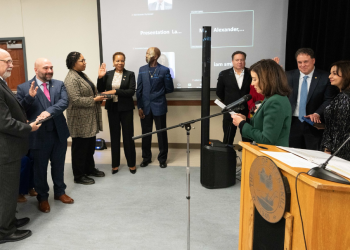Total nonfarm payroll employment beat expectations and rose by 467,000 in January, according to data released this morning by the U.S. Bureau of Labor Statistics.
Some observers had expected employment to rise by only about 350,000 in January. The number of employed added in January was slightly less than the average monthly gain during 2021 of 555,000.
 The unemployment rate was little changed at 4.0%. Employment growth continued in leisure and hospitality, professional and business services, retail trade and transportation and warehousing.
The unemployment rate was little changed at 4.0%. Employment growth continued in leisure and hospitality, professional and business services, retail trade and transportation and warehousing.
Among the major worker groups, the unemployment rates for adult men stood at 3.8% while the rate for adult women was 3.6%. The ethnic breakdown showed unemployment of Whites at 3.4%, Blacks at 6.9%, Asians 3.6% and Hispanics 4.9%.
The total U.S. civilian labor force in January 2022 numbered 163,687,000. Of the total, 157,174,000 people were employed.
Employment in leisure and hospitality expanded by 151,000 in January. However, since February 2020, employment in leisure and hospitality is down by 1.8 million, or 10.3%.
Retail trade employment rose by 61,000 in January, bringing it to 61,000 above where it was in February 2020.
In January, average hourly earnings for all employees on private nonfarm payrolls increased by 23 cents to $31.63. Over the past 12 months, average hourly earnings have increased by 5.7%, somewhat below the nation”™s 7% inflation rate. In January, average hourly earnings of private-sector production and nonsupervisory employees rose by 17 cents to $26.92.
Nick Bunker, economic research director for North America at the Indeed Hiring Lab, who focuses on the U.S. labor market, commented this morning, “Today”™s report suggests that while Omicron had a clear impact on day-to-day life in the United States, the labor market impact was less severe than expected. As we have seen in the past, the economic fallout from each successive wave of the pandemic has been smaller and smaller. This trend, along with strong demand for workers suggests 2022 could be a year with continued strong gains for the labor market.”


















